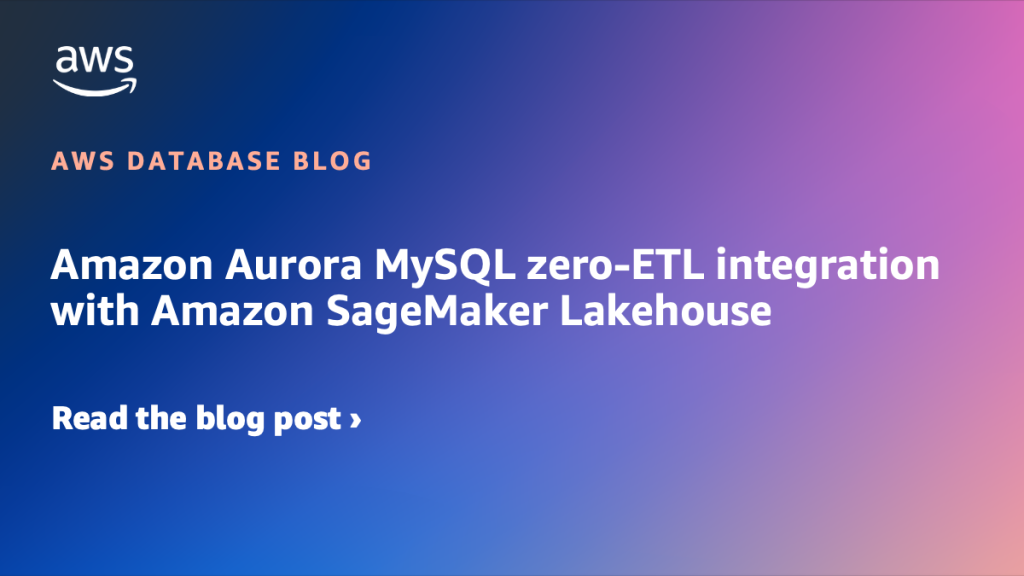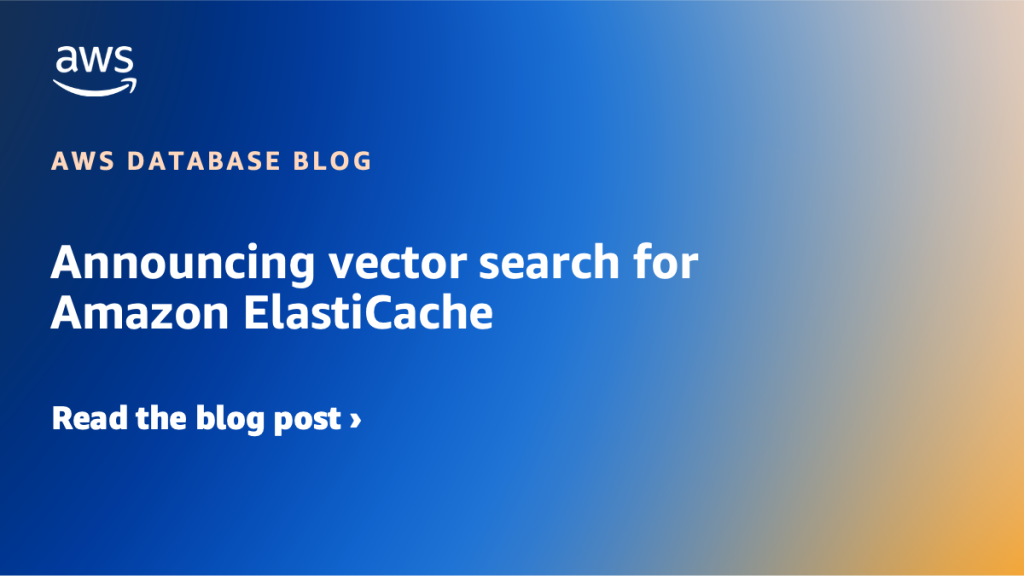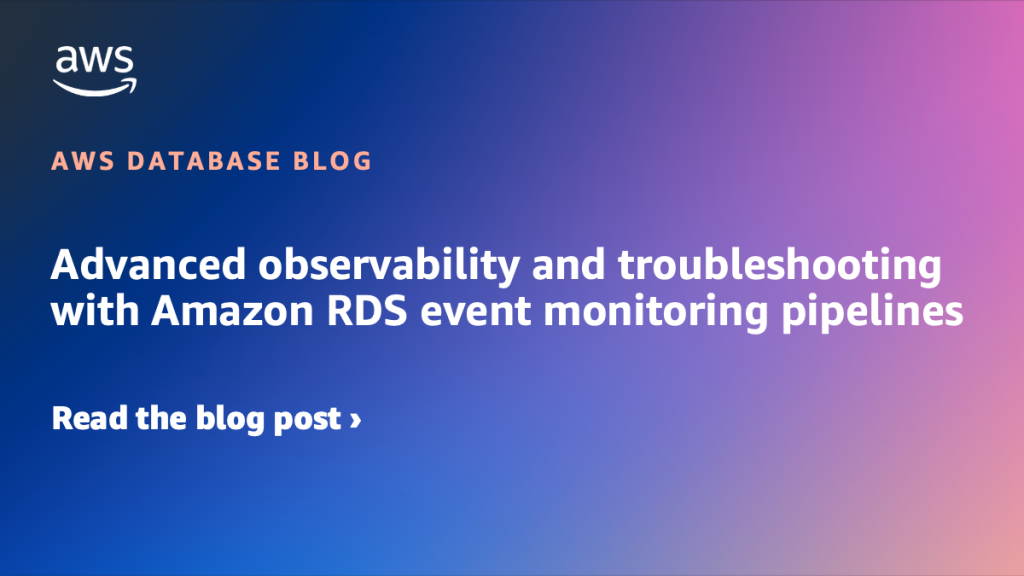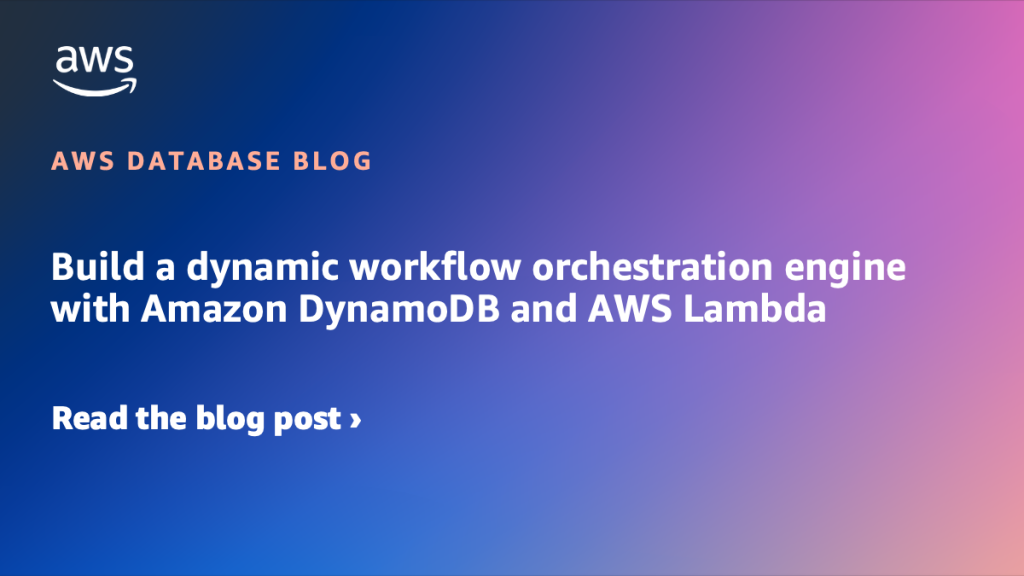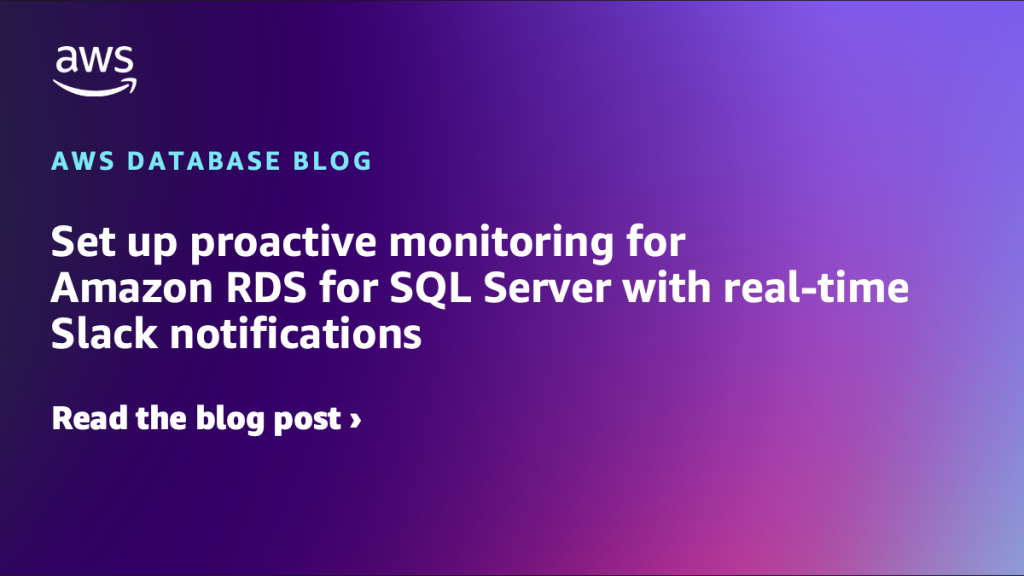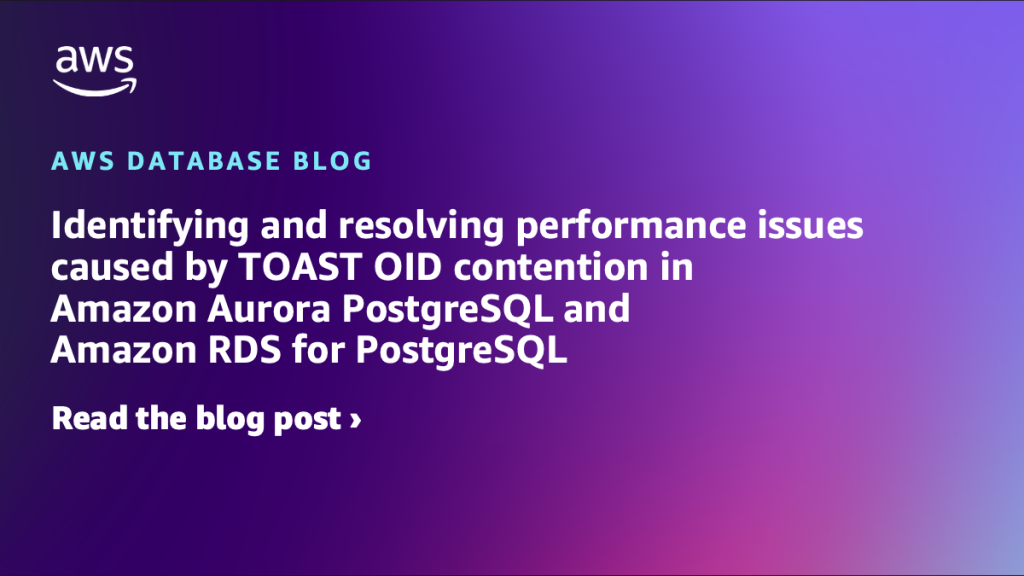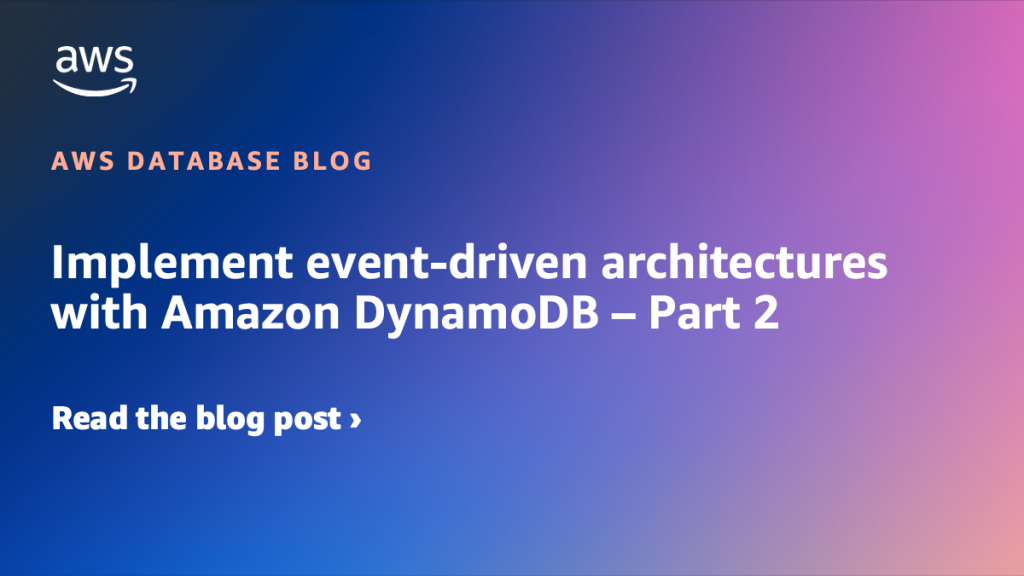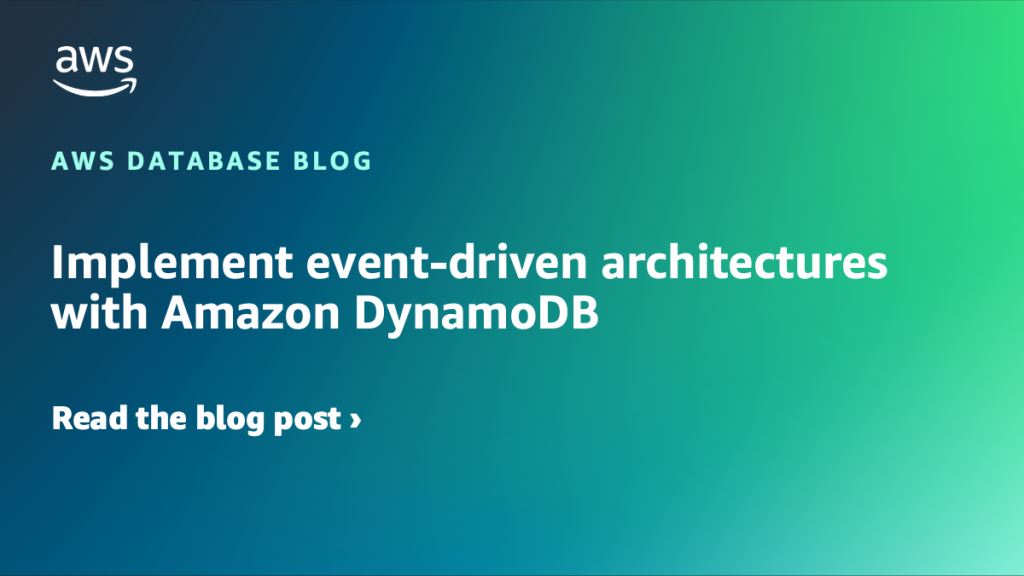AWS Database Blog
Category: Advanced (300)
Amazon Aurora MySQL zero-ETL integration with Amazon SageMaker Lakehouse
In this post, we explore how zero-ETL integration works, the key benefits it delivers for data-driven teams, and how it aligns with the broader zero-ETL strategy in AWS services. You’ll learn how this integration can enhance your data workflows, whether you’re building predictive models, entering interactive SQL queries, or visualizing business trends. By eliminating traditional extract, transform, and load (ETL) processes, this solution enables real-time intelligence securely and at scale to help you make faster, data-driven decisions.
Announcing vector search for Amazon ElastiCache
Vector search for Amazon ElastiCache is now generally available. You can now use ElastiCache to index, search, and update billions of high-dimensional vector embeddings from popular providers like Amazon Bedrock, Amazon SageMaker, Anthropic, and OpenAI—with latencies as low as microseconds and up to 99% recall.
Advanced observability and troubleshooting with Amazon RDS event monitoring pipelines
AWS provides a wide range of monitoring solutions for your Amazon RDS and Amazon Aurora instances, such as Amazon CloudWatch, Amazon CloudWatch Database Insights, and AWS CloudTrail. Amazon RDS event monitoring pipelines make troubleshooting operational events like reboots, errors, and failovers more efficient. In this post, we present a solution to get a head start on troubleshooting by sending an email after a reboot or failover with the last 10 minutes of important CloudWatch metrics, top queries, and related API calls performed on the instance.
Build a dynamic workflow orchestration engine with Amazon DynamoDB and AWS Lambda
In this post, I show you how to build a serverless workflow orchestration engine that uses Amazon DynamoDB and AWS Lambda. The complete implementation is available in a GitHub repository, which includes two fully functional examples that you can deploy and run immediately to see the orchestration engine in action.
Set up proactive monitoring for Amazon RDS for SQL Server with real-time Slack notifications
In this post, we demonstrate how to build an efficient, serverless monitoring system for Amazon RDS for SQL Server using AWS native services and Slack integration.
Identifying and resolving performance issues caused by TOAST OID contention in Amazon Aurora PostgreSQL Compatible Edition and Amazon RDS for PostgreSQL
In this post, we explore the challenges of OID exhaustion in PostgreSQL, focusing on its impact on TOAST tables and how it leads to performance issues. We will cover how to identify the problem by reviewing wait events, session activity, and table usage. Additionally, we discuss practical solutions, from cleaning up data to more advanced strategies such as partitioning.
Implement event-driven architectures with Amazon DynamoDB – Part 3
In this three-part series, we explore approaches to implement enhanced event-driven patterns for DynamoDB-backed applications. Throughout this series, we’ve examined various strategies for managing data within DynamoDB. This post shifts the focus to an event-driven pattern that reliably schedules future downstream actions using EventBridge Scheduler.
Implement event-driven architectures with Amazon DynamoDB – Part 2
In this three-part series, we explore approaches to implement enhanced event-driven patterns for DynamoDB-backed applications. In this post (Part 2), we explore another method which uses global secondary indexes (GSIs) to handle fine-grained Time to Live (TTL) requirements.
Implement event-driven architectures with Amazon DynamoDB
In this three-part series, we explore approaches to implement enhanced event-driven patterns for DynamoDB-backed applications. In this post (Part 1), we focus on improving DynamoDB’s native TTL functionality by implementing near real-time data eviction using EventBridge Scheduler, reducing the typical time to delete expired items from within a few days to less than one minute.
Long-term storage and analysis of Amazon RDS events with Amazon S3 and Amazon Athena
In this post, we show you how to implement an automated solution for archiving Amazon RDS events to Amazon Simple Storage Service (Amazon S3). We also discuss how to analyze the events with Amazon Athena which helps enable proactive database management, helps maintain security and compliance, and provides valuable insights for capacity planning and troubleshooting.
